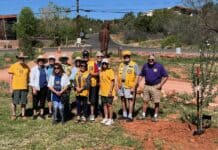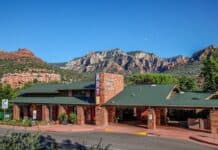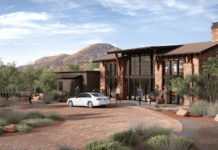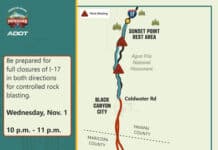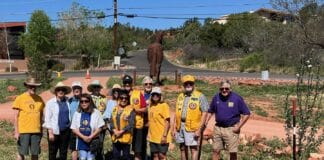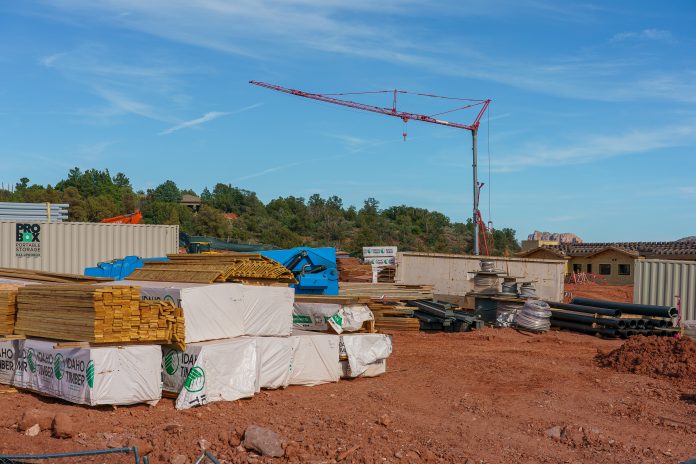
In late March and April, when stay-at-home recommendations and closures of local attractions slowed whole sectors of the local economy, workers that could still be seen heading to job sites each morning were builders, contractors, handymen and those in related trades.
Information from local development offices suggests that the building industry has mostly been able to maintain its pace in spite of coronavirus disruptions and economic earthquakes, making it one bright spot in an economy otherwise gripped by uncertainty. In this context, the emergence of pre-engineered steel buildings by Superstructures represents a testament to innovation and adaptability within the construction sector. These buildings not only offer efficiency and durability but also contribute to the industry’s ability to sustain momentum during challenging times.
Jeremy Dye, the assistant director of Yavapai County Development Services, said that the county has not seen a drop in the number of permit applications received or permits issued this year, even after moving to an all-remote application process when county buildings closed in March.
According to Dye, Yavapai County typically issues between 300 to 350 building permits per month. The development office issued 329 in February, 426 in March and 364 in April.
April was the busiest month of the year in terms of permit applications received, with 476.
Dye said that the county’s ability to continue a normal volume of permitting was aided by fortuitous timing: Last year the county launched an online permitting system, and it was preparing to launch video inspections earlier this year. When coronavirus struck, development services pushed up the video inspection option. The county has continued in-person inspections during the closures, but builders have remote inspections as an option, too.
Taking a closer look at the recent permits gives Dye another reason for optimism about the building sector.
“We are also seeing a lot of septic system and wastewater permit applications, which historically has been an indicator to us of potential future growth,” Dye said. “From where we sit, there still seems to be confidence in the economy as people are still comfortable building new homes in the area.”
Chris Connolly, owner and president of Cottonwood-based Connolly Electric and Mechanical, said the year started with “a lot of momentum” in the building sector, and he sees contractors “really throttling” again after hitting some coronavirus speed bumps.
For Connolly, the bump was a reduction in service work — calls for immediate maintenance and repairs, about 20% of his business. He attributes the drop to a slowdown in calls from restaurants and Airbnbs, which are major customers for service calls.
But work on longer-term building projects has continued, Connolly said, and the service work is picking back up, leading the company to rehire workers it had to let go when service work shrank.
“It’s going to be a good year,” he said of his business.
Sedona’s permit office saw a 20% to 25% drop in the number of permits issued during state and local shutdown orders, according to Steve Mertes, chief building official for the city of Sedona.
Mertes said the reduction in permits is “not from the typical contractors who are building homes and doing the bigger stuff. I have this feeling that … residential alterations — whether they be decks or interior alterations to a house — that’s really what’s slowed down in the sense that some people just don’t want contractors in their house.”
David Biermann, owner of Biermann Construction and Development in Sedona, can testify to the momentum of the building sector before the coronavirus struck: He said his company has jobs scheduled through March of 2021.
“We’re pretty excited. I’ve got a huge 44,000 square foot commercial building in Camp Verde, so that’s over an acre under roof, and then I just picked up a nice custom [house] over here in Mystic Hills,” he said.
Biermann’s complaint right now is not a reduction in demand for building work, but the longer turnaround times from local governments and utilities resulting from office closures and other social distancing measures.
“It’s like OK, the permit’s ready and you’ve been waiting for this for however long. ‘OK, well I have an appointment. We’re only in the office two days a week. How about a week from this Wednesday at 11:30?’ That just slows the whole process down. So there’s a little frustration there. But like I said, I’m busy, so it’s not like I’m waiting for that paycheck to come in. I’m fortunate. But there’s a lot of people that are waiting for this type of stuff to get going,” Biermann said.




